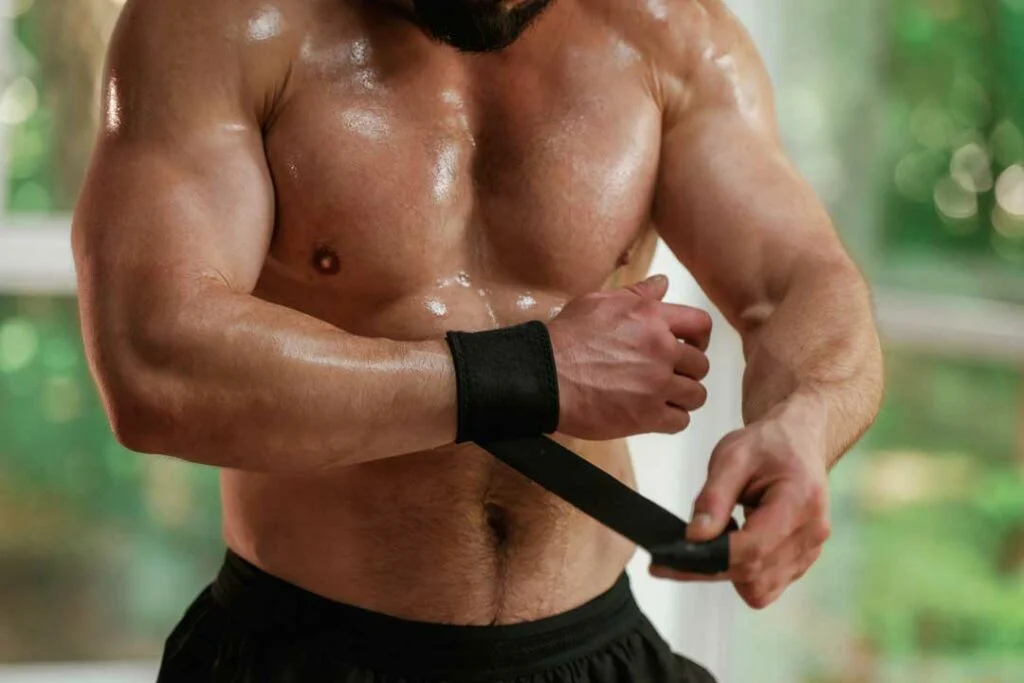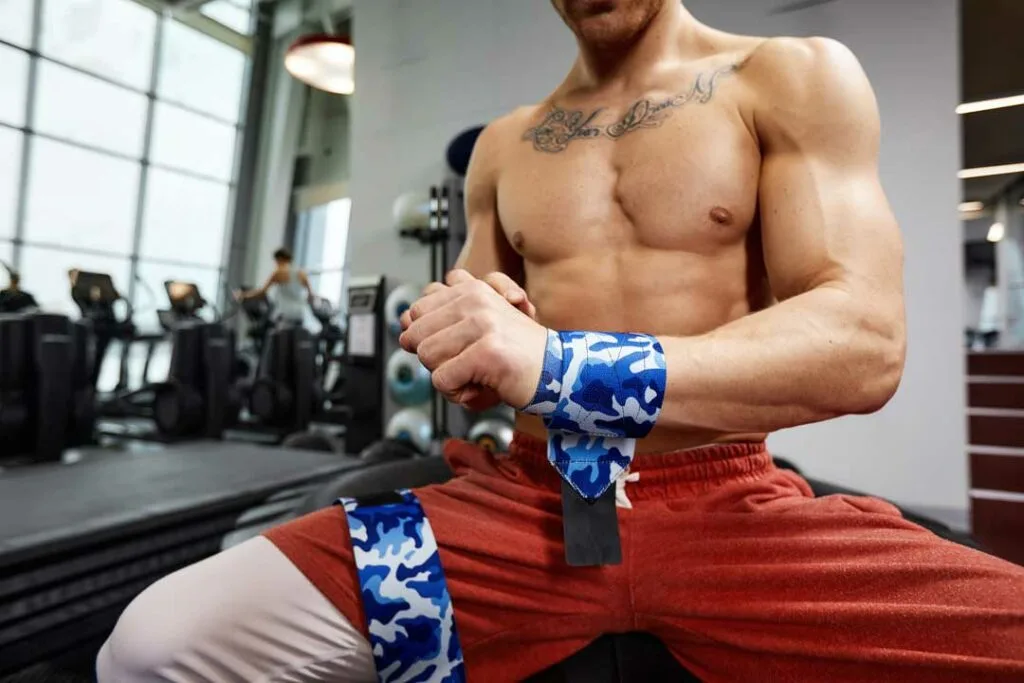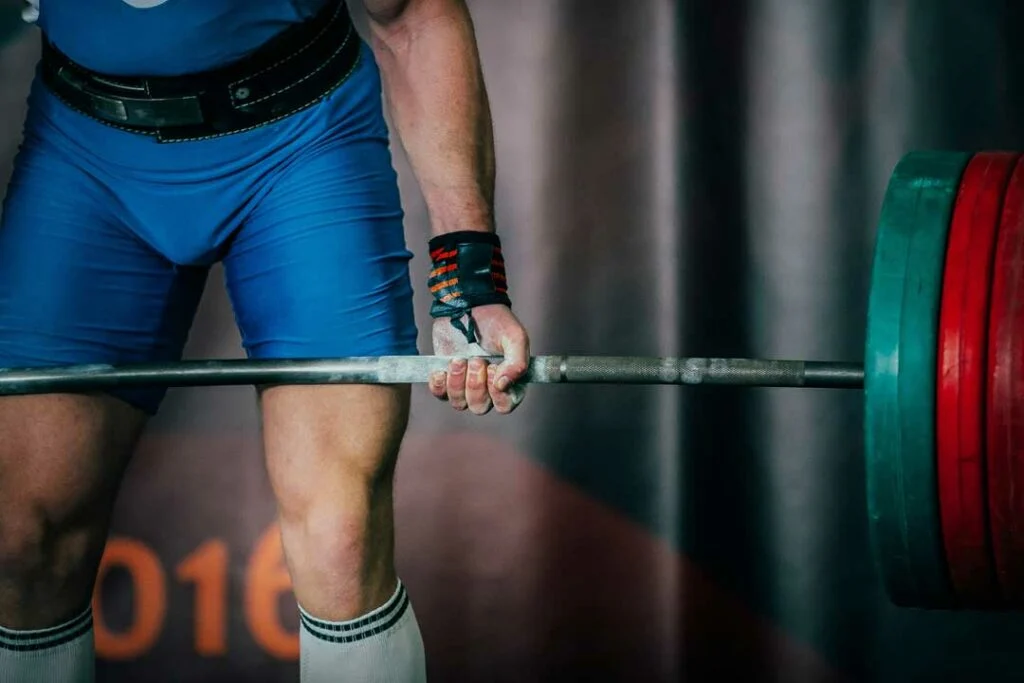Weight lifting wrist straps are more than just a gym accessory—they’re your secret weapon for injury prevention, better grip, and long-term gains.

Wrist straps are a popular accessory among weight lifters, designed to enhance grip strength and stability during heavy lifting. These straps are typically made from durable materials such as cotton, nylon, or leather, and wrap around the wrist and barbell, securing your hold.
How Weight Lifting Wrist Straps Prevent Injury and Boost Progress
Their fundamental role is to prevent the barbell from slipping, enabling you to lift heavier weights with more confidence and control.
Incorporating wrist straps into your weight lifting routine can be particularly beneficial if you are working on exercises that demand significant grip strength, such as deadlifts, rows, and shrugs.
The Importance of Injury Prevention in Strength Training
Strength training, while highly beneficial, carries a risk of injury if not performed correctly. Injuries can range from minor strains to severe issues that may sideline you for extended periods. Wrist injuries, in particular, are common due to the significant load placed on them during weight lifting exercises.

Preventing injuries should be a top priority in any fitness regimen. Tribe weight lifting wrist straps can play a crucial role in this context by providing additional support to your wrists, reducing the likelihood of hyperextension or strain.
By stabilizing your wrists, straps help distribute the weight more evenly, minimizing the stress on joints and tendons.
Using wrist straps can also aid in maintaining proper form, which is vital for injury prevention. When your grip begins to weaken, you may unintentionally compromise your form to compensate, leading to potential injuries. With wrist straps, you can maintain your form longer, ensuring safer and more effective workouts.
Benefits of Using Weight Lifting Wrist Straps
Wrist straps offer numerous benefits that extend beyond merely enhancing grip strength. One of the primary advantages is the ability to lift heavier weights, which can lead to increased muscle mass and strength gains over time. By securing your grip, wrist straps allow you to push beyond your usual limits, breaking through plateaus and reaching new milestones.
Another significant benefit is the reduction of forearm fatigue. During high-rep sets or extended workout sessions, your forearms may tire before the targeted muscle group does, limiting your ability to maximize your workout. Wrist straps mitigate this issue by taking some of the load off your forearms, allowing for more extended and productive training sessions.

Additionally, wrist straps can be a valuable tool for individuals recovering from wrist injuries. By providing extra support, they enable you to continue training while safeguarding your wrists from further damage. This adaptability makes wrist straps a versatile addition to any weight lifter’s toolkit.
How Wrist Straps Enhance Performance and Support Progress
The use of wrist straps can significantly enhance your performance in the gym by allowing you to focus on lifting heavier loads without being hindered by a weak grip. This focus on lifting efficiency translates into better results, as you can perform more reps and sets with higher weights, contributing to muscle growth and increased strength.
Moreover, wrist straps support long-term progress by enabling consistent training sessions. They reduce the strain on your wrists and forearms, allowing you to train more frequently and with higher intensity. This consistent effort is crucial for making steady progress and achieving your fitness goals over time.

Wrist straps also encourage the development of proper lifting techniques. By providing the necessary support, they enable you to maintain correct form throughout your lifts, which is essential for avoiding injuries and maximizing the effectiveness of your workouts. Over time, this focus on form and technique leads to better overall performance and fitness outcomes.
Choosing the Right Weight Lifting Wrist Straps
Selecting the right wrist straps is crucial for maximizing their benefits. Consider the material, as it affects durability and comfort. Cotton straps are generally more comfortable and absorbent, while nylon and leather options offer greater durability and support. Choose a material that suits your lifting style and preferences.
Another important factor is the length and width of the straps. Longer straps provide a more secure grip, especially for larger bars, while wider straps offer increased wrist support. Consider your specific needs and the types of exercises you perform when selecting the dimensions of your wrist straps.

Finally, consider the closure mechanism. Some straps use a loop design, while others feature Velcro closures. Loop designs are more traditional and may offer a more customizable fit, while Velcro closures are quick and easy to adjust. Evaluate the pros and cons of each option to find the best fit for your lifting routine.
Proper Technique: How to Use Wrist Straps Effectively
Using wrist straps correctly is essential to reap their full benefits. Begin by threading the strap through the loop, creating a circle. Place your hand through the circle, positioning the strap around your wrist. Tighten the strap so that it fits snugly but comfortably, ensuring it doesn’t cut off circulation.
Next, wrap the loose end of the strap around the barbell, starting from underneath. Wind it tightly around the bar, overlapping as you go to secure your grip. Ensure the strap is tightly wound to prevent slipping during your lift. Repeat this process with the other hand.
Finally, grip the bar firmly, ensuring the straps are evenly secured on both wrists. Practice using the straps during your warm-up sets to become comfortable with the process. Remember, wrist straps are a tool to enhance your lifting capabilities, not a substitute for proper technique and strength development.
Alternatives to Wrist Straps for Wrist Support
While wrist straps are a popular choice for grip support, there are alternatives that may better suit your needs. Wrist wraps, for example, offer additional wrist stabilization, particularly beneficial for pressing exercises where wrist alignment is crucial. They are typically made of elastic material and wrap around the wrist, providing compression and support.

Another option is grip pads or lifting grips, which are designed to enhance grip without wrapping around the wrist. These pads sit in the palm of your hand, providing a non-slip surface to hold the barbell. They are an excellent choice if you want to improve grip without restricting wrist movement.
Lastly, if you aim to build natural grip strength, consider using chalk. Chalk absorbs moisture and enhances your grip, reducing slippage during lifts. It’s a simple, cost-effective alternative that can be used in conjunction with other support tools or on its own for a more natural lifting experience. An investigation into the effect of static wrist positions on grip strength revealed that certain wrist postures can influence grip strength measurements, emphasizing the importance of wrist alignment during exercises.
Why You Should Use Wrist Straps for Lifting Heavier, Safer, and Longer
Incorporating wrist straps into your weight lifting routine can significantly enhance your performance and support long-term progress. When choosing wrist straps, consider factors such as material, length, and closure type to find a pair that meets your specific needs. Proper technique is crucial to maximize their benefits, so take the time to learn how to use them effectively. Additionally, explore alternatives like wrist wraps and grip pads to find the best combination of tools for your lifting routine.

Jessi is the creative mind behind The Coffee Mom, a popular blog that combines parenting advice, travel tips, and a love for all things Disney. As a trusted Disney influencer and passionate storyteller, Jessi’s authentic insights and relatable content resonate with readers worldwide.
